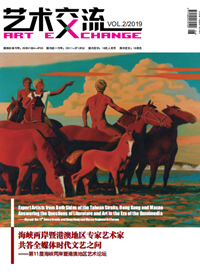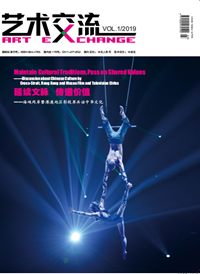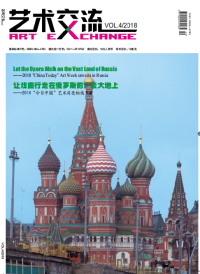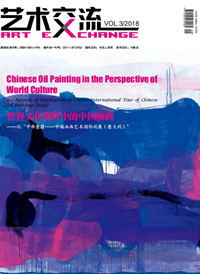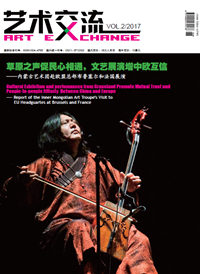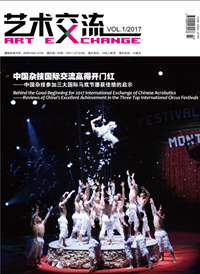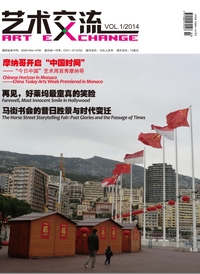The nationality of Mongolian is a grassland group scattered in northern China. It has a population of nearly 6 million, distributed in the Inner Mongolia Autonomous Region, Xinjiang, the three northeastern provinces, Gansu and Qinghai, and some of them are scattered in other parts of the country.The Mongolian people have always been known as the "music nation" and "poetry nation", and its folk songs are rich and diversified in form.In the Hetao area, the Mongolians compare the richness of their folk songs to as countless as the cow fur, and "just finishe singing about the amount of a cow ear for the past three years".The Mongolian folk songs have the unique charm of the grassland people. Whether resounding loud and clearor low-lying in rhythm, they fully demonstrate the Mongolian people's simple, hearty, enthusiastic and unrestrained characteristics with the grassland ethnic style, and in particular, the Mongolian long-tone and short-tone folk songs, which are world-famous, are the most popular traditional forms of the majority of Mongolians for thousands of years.
Distinctive folk songs
Mongolian folk songs are divided into two categories, long and short-tone genres, and the long-toneis mostly spread in the pastoral area, while the short-tone is quite popular in semiagricultural and semi-pastoral areas.It is not only the most representative art form of the prairie pastoral song, but an excellent oral culture preserved by the Mongolian people for generations as well, showcasing an extremely distinct grassland nomadic culture and regional cultural characteristics, resulting in being named as the "living stone of grassland music".In the language of Mongolian, the long-tone has the meaning of "longlasting" and "eternal", and it is also translated as "long song", "long-tone song" or "grassland pastoral song". Its long-tone folk songs enjoy a long history with a length of over a thousand years.
Because the long-tone form is basically a folk song that the Mongolians perform during the grazing of cattle and sheep and traditional festivals, resulting in showing the main feature as few words with long tone. And it usually shows only the upper and lower two-line lyrics, and sometimes there is even no lyric at all, just a sound of deep expression of inner feelings.The perform of long-tone is the Mongolian's reflection of their own life experiences, praises of natural objects, inheritance of production experience and sighs of life perceptions, so they can be played by singers merely based upon their own understanding, as the singing style is diversified with different rhythm.Under normal circumstances, the lyrics of Mongolian long-tone are mostly depictions and praises of their most familiar subjects as grasslands, horses, blue sky, white clouds and etc., especially presenting more songs about horses; and the basic themes of long-tone include pastoral and homesickness , hymns, wedding songs and those for wines.
The short-tone is a folk song genre that was first developed by the Mongolian people. The short-tone folk songs are also called rhythm for mountain climbing, Shan Quer, which can be sung in Chinese as well. The characteristics of the Mongolian shorttone music are short with rigorous structure, simple tone, less decorative sound, smooth melody, little ups and downs and distinctive narrative features.Comparing with that of the longtone, the structural form and layout of short-tone’s music and lyrics are more harmonious and symmetrical. The rhythm of short-tone is quite standard and regular, mostly using a single beat, with the musicstyle of symmetrical square structure.In addition to a large number of upper and lower sentence structure, there are also complex music composed by threesentence, four-sentence, five sentence and even more phrases. The lyrics of short-tone folk songs generally take four sentences as a section, creating a form of sub-section songs, which can be repeated and sung in different phonology.
The performing theme of the Mongolian short-tone is very broad, involving almost all aspects of their social life, including love songs, toast songs, wedding songs, birthday songs, narrative songs, lullaby and etc. widely spread amongst the living region of the Mongolian as GadaMeiren, SenjiDema, NuowenJina, WuyunShandan, Two GreatHorses of Genghis Khan,Long Mei, White Mountains in Distance, Great Wine and etc. as the outstanding short-tone folk songs.
Secrets passed down from generation to generation
It is an important matter that cannot be ignored and urgently pursued to carry forward the inheritance and innovation of outstanding national cultures with purpose of realizing the prosperity of a nation’s culture and the continuous enhancement of the national spiritual strength.The Mongolian long and shorttone folk songs, possessing a long history, have been passed down from generation to generation, and the main reasons are as follows:
Mongolianspossess festivals with rich diversity and their uniqueness, such as Lantern Festival, Cold Food Festival, Bath Buddha Festival, Sacrifice Bag, Sacrifice of Aobao, Naadam and Xiaonian.During the festivals, songs and dances will become a crucial part of the Mongolian festive activities. Especially Mongolian folk singers are most good at inheriting fine traditions by singing national history, praising national heroes and virtues through long and short-tone songs.
The unique method of long-tone inheritance integrates with the festive atmosphere, showing strong passion, which can not only inspire people's enthusiasm for participation, but also enhance their self-confidence and cohesiveness, meanwhile, realizing a better inheritance of its excellent national culture through aninvisible manner, resulting in immortal imprints in people’s minds.
Since ancient times, the Mongolian people have been known for their capability in singing and dancing,among which singing has become an important part of their daily life.In everyday life, whether it is regular production, funeral and marriage, banquets, family and friends gathering, important festivals, praying and sacrifice for ancestors, and even in raising children, the Mongoliansuse long and short-tone folk songs to express emotions, feelings and impart knowledge, as the contents of such songscover all aspects of people's lives.In addition, songs of history, politics and nursery rhymes are rich in content concerningproduction and daily necessity.
In the long-term circulation of Mongolian long and short-tone folk songs, due to their unique ethnic charm, the Mongolian region has no distinction between men or women, young or old, songs are almost spread everywhere by all people, turning the Mongolian nationalitybecome one of the most involved ethnic groups with highest degree of folk songs passage amongst generations in China, even the whole world.
The performing method of Mongolian long and short-tone folk songs, especially the short-tones, is free and casual. They can solo, quartet, lead, chorus and etc., so that people could express a sense of identity and participation in the length and tone of the folk songs with diversified methods of performance.In addition, the Mongolian people pay much attention to the inheritance of traditional folk songs. Hence, in the Mongolian region, teachers pass to the students, fathers pass to the sons, forming a tradition of passage and sound degree of national participation as learn as child, sing in youth and educate in the elder, making a much solid social foundation for the inheritance of its long and short-tone folk songs.
However, the Mongolian long-tone is a folk art with oral inheritance as the main method. Because its main way of inheritance is from mouth to mouth, hence, whether it can be better passed down often depends on the inheritors and the changes occurred in the environment.In recent years, due to the great changes in the production and lifestyle of some Mongolians in their living areas, for example, in some areas, because of the further implementation of the grassland contract responsibility system, the herdsmen have changed the nomadic production used to be following the track of grassland that has been in existence for thousands of years, and gradually settled near the contracted pastures, which has changed the natural environment in which the long-tone folk songs are passed down.Especially with the passage of time, some famous longtoneperformers come into their elder period, some have passed away, and the long-tune folk songs,the unique traditional singing style of Mongolian, is also in danger of being lost.In the Mongolian region, areas, once famous for the long-tone songs, as East Tumed, Horqin, Alxa and other places, have fewer and fewer artists who can sing long-tone folk songs. It will inevitably affect the inheritance and protection of the Mongolian longtone folk songs in these regions if necessary methods are not implemented.
Hence, we must consciously establish various protection mechanisms, attach close attention to cultivating specialized research talents and teams of inheritance, and constantly explore the ways of inheriting the Mongolian long and shorttone folk songs. At the same time, it requires to explore ways and methods for Mongolian long and short-tone folk songs’ innovation.
Vitality and Sense of Times
Any kind of excellent national traditional cultures will continue to be enriched, perfected, reformed and innovated in the course of its development. The same is true of Mongolian long and shorttone folk songs.
In the development of Mongolian folk songs, in order to adapt to the early Mongolian hunting culture, Mongolian folk songs are mainly short-tone with weak lyricalness, showcasing strong narrative and singing and dancing features in the early stage of its development.With the transformation of Mongolian people from mountainous areas to grasslands and their ways of production and lifestyle, Mongolian folk songs began to evolve into a long-tone, gradually forming a unique grassland nomadic music. After a long process of inheritance and development from simple to complex and from low to high, the long-tone folk songs gradually occupy the dominant position of Mongolian folk songs.
With the development of history, since the Yuan Dynasty, especially after the middle of the Qing Dynasty, the relationship between the Mongolian Plateau and the Central Plains has been further strengthened, and the exchanges between the Mongolian people and the various nationalities in the country, especially in terms of the exchanges between cultures, have been further enhanced.Influenced by the rap artfrom the Central Plains, the Mongolian short-tone narrative songs and long-form rap songs have absorbed many brand-new elements, while the short-tone folk songs have also been reborn and developed rapidly. The long-tone folk songs have better maintained their characteristics and become more mature.
The foundation of the People's Republic of China has enabled the Mongolian people to be completely liberated, and the Mongolian folk songs have entered a new stage of development and prosperity.What is even more gratifying is that with the continuous deepening of the process of socialist modernization, the Mongolian long and short-tone folk songs are constantly progressing and innovating.
As early as the early 1960s, the song of Praise by a famous singer HU Songhua has caused a huge sensation.The song skillfully combines the Mongolian long and short-tone folk songs, and sends out the excitement of the Inner Mongolian people to indulge in a high-song, toasting and turning over to be the master.This kind of innovation not only makes good use of the superiority of Mongolian long and short-tone folk songs, but also does not dilute the original flavor of such songs.Since the 1990s, Mongolian singer Tengri has carried out bold reforms and innovations in the singing of Mongolian folk songs. His singing of Paradise, The Great Land, etc., has subtly integrated the various representative factors of Mongolian long and short-tone folk songs.Whether Dedema, WulanTuoya,WulanTuya or Sene, they have cast great attention to the songs integrating the characteristics of the Mongolian long and short-tone folk songs, and thus become widely praised Mongolian singers.Especially for Buren Bayaer, many of the songs he sang are just right to use the strengths of the Mongolian long and short-tone folk songs, so that the songs are full of the charm of Mongolian folk songs and the atmosphere of modern society.
After entering the 21st century, the Hongyan created and sung by the Erguna band has inherited the traditional elements of the Mongolian short-tone folk songs, and added a lot of fresh content of the Mongolian folk songs of the new era.During the Spring Festival of 2018, the new Toast Song sung by the "Unity Alliance" Mongolian singer was a bold innovation of the Mongolian traditional Toast Song which has been circulated for thousands of years, making this traditional song more dynamic, lively and cheerful with contemporary characteristics in the special program of CCTV "Star Avenue · Carnival Star Avenue".
It can be discovered that, in the course of its development, the Mongolian long and short-tone folk songs are constantly innovating and perfecting in order to adapt to the new social, production and living environment, making this traditional folk song more fulfilling, lively with deeper sense of times and popularity amongst the ordinary people.
The Mongolian long and short-tone folk songs are a type of very precious traditional music of ethnic minorities in China. They are the cultural heritage of the Mongolian people after history of thousands of years, the precious spiritual wealth of the Chinese nation and a rare legacy of world culture.Therefore, inheriting, protecting and carrying forward the Mongolian long and short-tone folk songs is our unshakable historical mission. The new era calls for new reforms. We should earnestly explore the precious cores of Mongolian long and short-tone folk songs. On the basis of maintaining the essence of traditional long and short-tone folk songs, we must boldly reform with brave innovation, constantly absorbing fresh factors and creating more and more excellent works that are popular with all ethnic groups, showcasing features as "down-to-earth, wide spreading and easy preservation".



